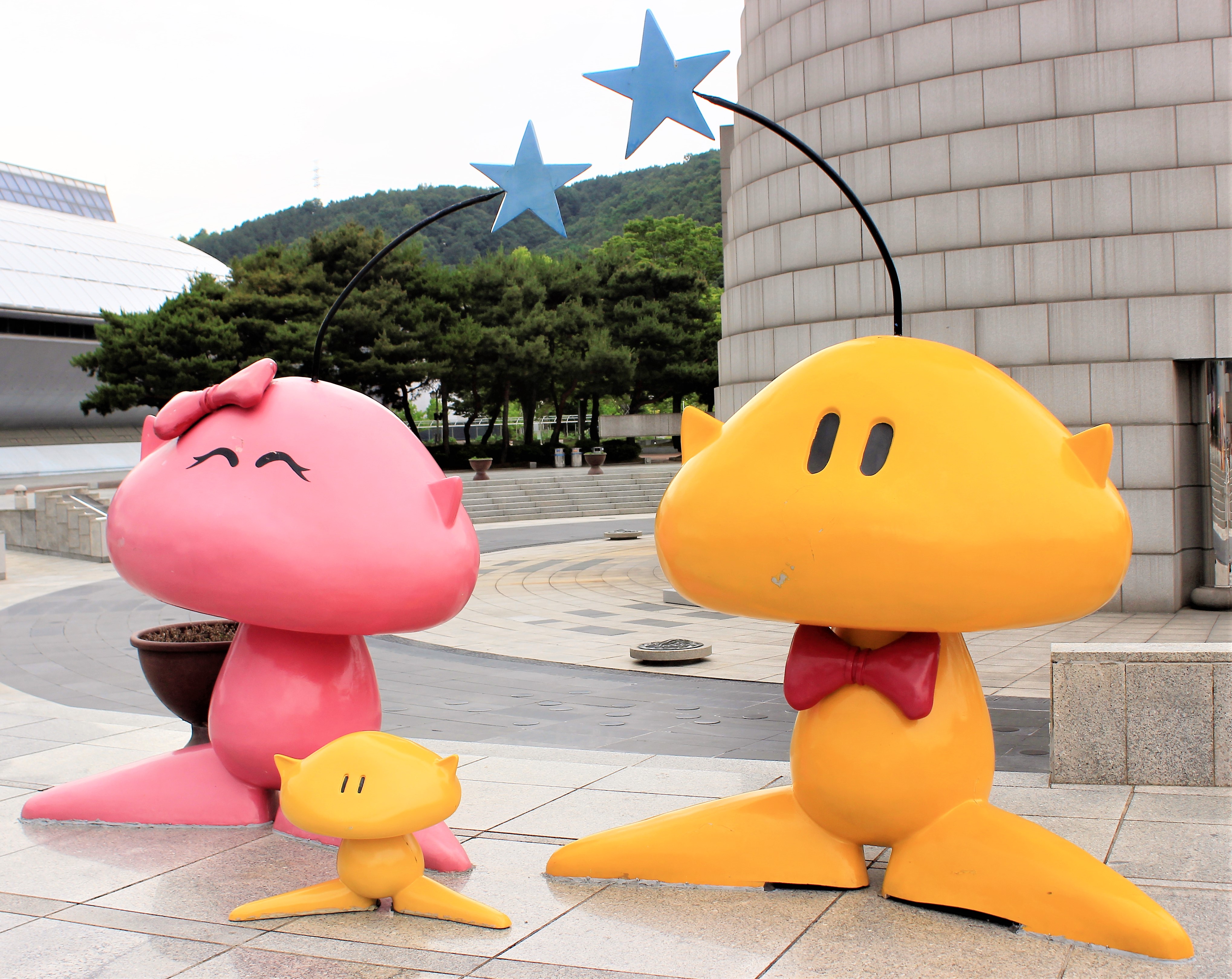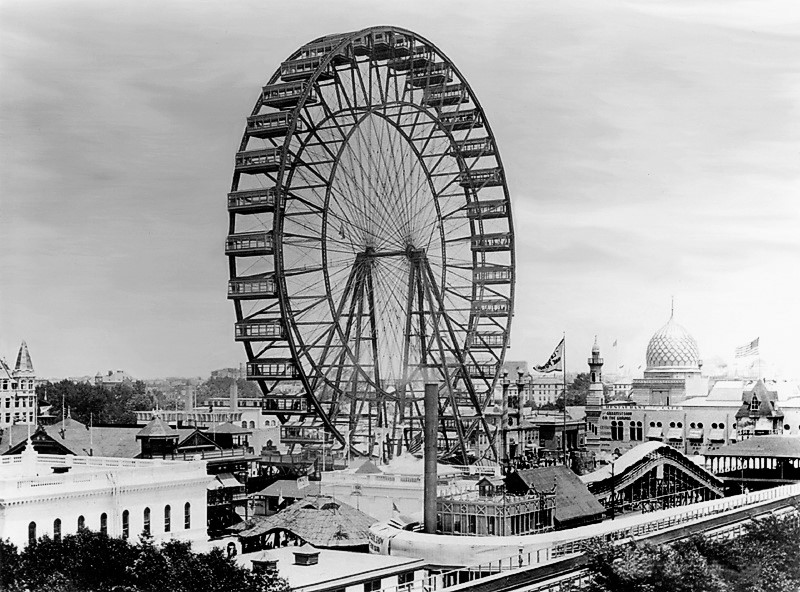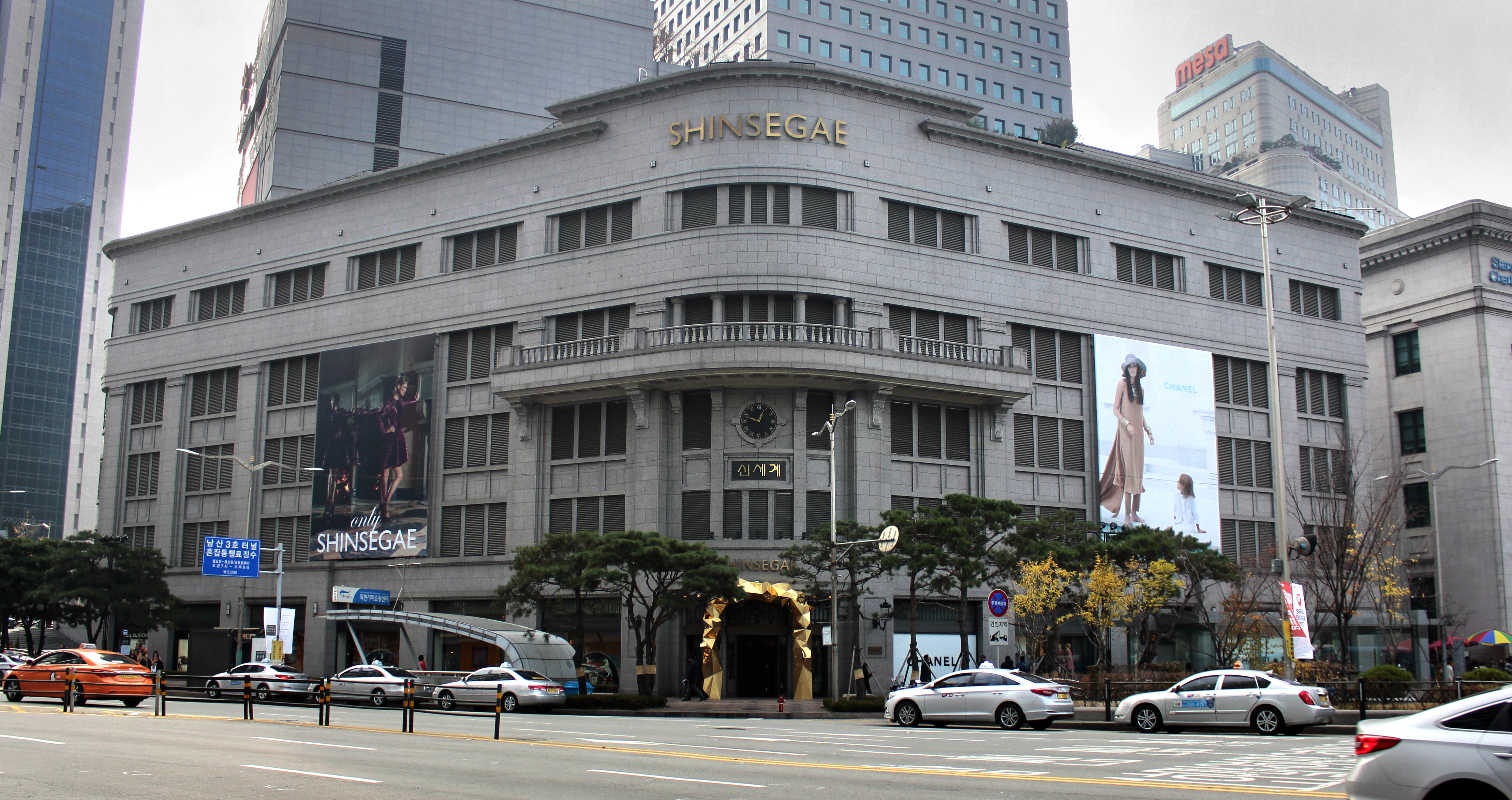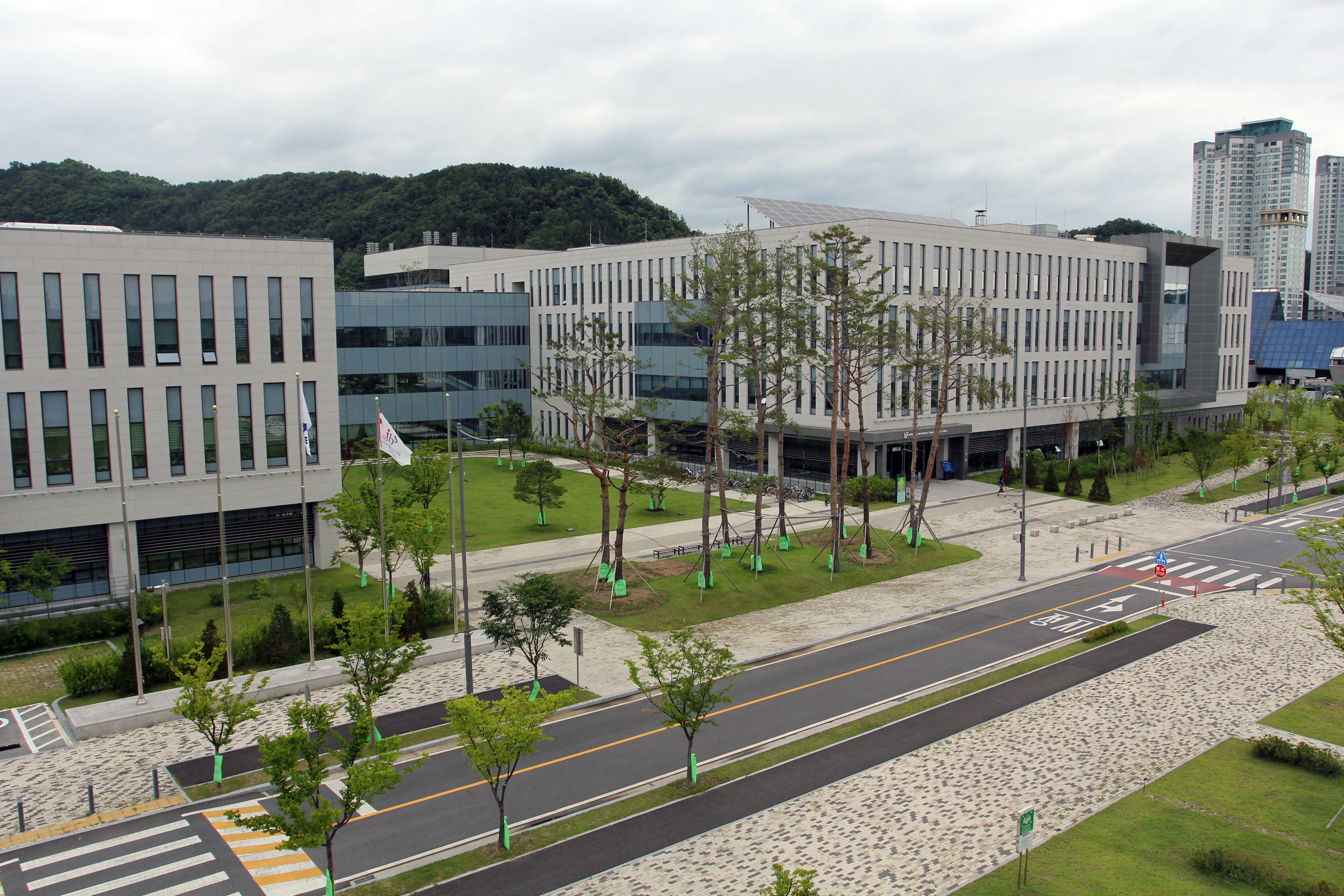|
Expo Science Park
Expo Science Park () is a science park in Yuseong District, Daejeon, South Korea, built for Taejŏn Expo '93. Facilities at Expo Park included a garden, amusement park, and observation tower. While the tower and some buildings remain, most of the expo buildings have now been removed. The Daejeon Convention Center became the first convention center in the city in 2008 and opened their second building in 2022. 300px, MAGLEV UTM-02, left In September 2014, the Ministry of Science, ICT and Future Planning announced that Expo Science Park would be demolished in stages from November 2014 to August 2015. However, in recognition of their historic value, Hanbit Tower, the international conference room, and the simulation pavilion would be kept. In November 2014, the Shinsegae consortium won a bid to build the science complex within the park. In September 2017, Studio Cube, a state-run film studio complex on the site of the park, formally opened its doors to film and drama production. ... [...More Info...] [...Related Items...] OR: [Wikipedia] [Google] [Baidu] |
Yuseong District
Yuseong District () is a Administrative divisions of South Korea, gu ("district") of Daejeon, South Korea, known for high tech industries, Taejŏn Expo '93, Daejeon Expo '93, Daedeok Science Town and the Yuseong Special Tourism District. Daejeon Islamic Center is also located in Kung-dong, Yuseong District. The Science Town is the core of the International Science and Business Belt. History Yuseong first started its spa business in 1913, and by the 1970s, major developments were made, adding 12 more hotels to the area, leading this area to be designated first as the Special Spa District in 1981 and finally as the Yuseong Special Tourism District by August 31, 1994. Tourism and technology Since the time of the Baekje Kingdom, travellers have visited Yuseong's Spring (hydrosphere), natural springs and Spa town, spas. This ultimately resulted in the creation of the Yuseong Special Tourism District. The majority of the hotels in Daejeon are situated in this area, and it is one of the c ... [...More Info...] [...Related Items...] OR: [Wikipedia] [Google] [Baidu] |
Daejeon
Daejeon (; ) is South Korea's list of cities in South Korea, fifth-largest metropolis, with a population of nearly 1.5 million. Located in a central lowland valley between the Sobaek Mountains and the Geum River, the city is known both as a technology and research center, and for its close relationship with the natural environment. Daejeon serves as a hub of transportation for major rail and road routes, and is approximately 50 minutes from the capital, Seoul, by Korea Train Express, KTX or Suseo high-speed railway, SRT high speed rail. Daejeon (along with Seoul, Gwacheon and Sejong City) is one of South Korea's administration hubs. The city is home to 23 universities and colleges, including KAIST, Korea Advanced Institute of Science and Technology (KAIST) and Chungnam National University, as well as government research institutes, and research and development centers for many chaebols such as Samsung, LG, mostly located in the city's ''Daedeok Innopolis, Daedeok Yeongu Danj ... [...More Info...] [...Related Items...] OR: [Wikipedia] [Google] [Baidu] |
Science Park
A science park (also called a "university research park", "technology park", "technopark", "technopolis", "technopole", or a "science and technology park" [STP]) is defined as being a property-based development that accommodates and fosters the growth of tenant firms and that are affiliated with a university (or government and private research bodies) based on proximity, ownership, and/or governance. This is so that knowledge can be shared, innovation promoted, technology transferred, and research outcomes progressed to viable commercial products. Science parks are also often perceived as contributing to national economic development, stimulating the formation of new high-technology firms, attracting foreign investment and promoting exports. Background The world's first university research park, Stanford Research Park was launched in 1951 as a cooperative venture between Stanford University and the Palo Alto, California, City of Palo Alto. Another early university research ... [...More Info...] [...Related Items...] OR: [Wikipedia] [Google] [Baidu] |
Taejŏn Expo '93
Taejon Expo '93 was a three-month international exposition held between 7 August 1993 and 7 November 1993 in the central South Korean city of Daejeon (at the time spelled "Taejŏn"). Theme The theme of the exposition was "The Challenge of a New Road of Development", with various other sub-themes around sustainable and 'green' development. The exposition was an officially endorsed Bureau International des Expositions (BIE) specialized exposition commemorating the centenary of the first-ever representation of the " Hermit Kingdom" (Korea) to a world exposition, namely the 1893 Columbian Exposition of Chicago. It claimed to be the first exposition held in a developing country, although both the BIE-sanctioned Exposition internationale du bicentenaire de Port-au-Prince in 1949 and Shanghai's Expo 2010 could also claim this title. Site zoning The exposition site consisted of three main areas – the international zone, the corporate zone and the fun park zone. Being a specializ ... [...More Info...] [...Related Items...] OR: [Wikipedia] [Google] [Baidu] |
Amusement Park
An amusement park is a park that features various attractions, such as rides and games, and events for entertainment purposes. A theme park is a type of amusement park that bases its structures and attractions around a central theme, often featuring multiple areas with different themes. Unlike temporary and mobile Travelling funfair, funfairs and traveling carnival, carnivals, amusement parks are stationary and built for long-lasting operation. They are more elaborate than Urban park, city parks and playgrounds, usually providing attractions that cater to a variety of age groups. While amusement parks often contain themed areas, theme parks place a heavier focus with more intricately designed themes that revolve around a particular subject or group of subjects. Amusement parks evolved from European fairs, pleasure gardens, and large Picnic, picnic areas, which were created for people's recreation. World's fairs and other types of international expositions also influenced the em ... [...More Info...] [...Related Items...] OR: [Wikipedia] [Google] [Baidu] |
Daejeon Convention Center
Daejeon Convention Center (), also known as simply DCC, is the convention center run by the Daejeon Tourism Organization and the sole convention center for the city. Facilities The first building, known as DCC1, was opened in 2008 with four exhibition halls and three medium-sized meeting rooms on the first floor and two grand ballrooms on the second floor. DCC2 opened in 2022 with a usable space of 49,754 square meters, which is roughly four times as much space as DCC1. The new building can accommodate 8,000 people. It is a three-story structure with four exhibition halls on the first floor and three meeting rooms on the third floor. DCC2 was built on the site of the Daejeon Trade Exhibition Hall. See also * Expo Science Park * Institute for Basic Science The Institute for Basic Science (IBS; ) is a Korean government-funded research institute that conducts basic science research and relevant pure basic research. Comprising approximately 30 research centers with more tha ... [...More Info...] [...Related Items...] OR: [Wikipedia] [Google] [Baidu] |
Maglev In Daejeon 06
Maglev (derived from ''magnetic levitation'') is a system of rail transport whose rolling stock is levitated by electromagnets rather than rolled on wheels, eliminating rolling resistance. Compared to conventional railways, maglev trains have higher top speeds, superior acceleration and deceleration, lower maintenance costs, improved gradient handling, and lower noise. However, they are more expensive to build, cannot use existing infrastructure, and use more energy at high speeds. Maglev trains have set several speed records. The train speed record of was set by the experimental Japanese L0 Series maglev in 2015. From 2002 until 2021, the record for the highest operational speed of a passenger train of was held by the Shanghai maglev train, which uses German Transrapid technology. The service connects Shanghai Pudong International Airport and the outskirts of central Pudong, Shanghai. At its historical top speed, it covered the distance of in just over 8minutes. Differ ... [...More Info...] [...Related Items...] OR: [Wikipedia] [Google] [Baidu] |
Ministry Of Science, ICT And Future Planning
The Ministry of Science, ICT and Future Planning (MSIP, ) was a ministry of the Government of South Korea. Its purpose is to set, manage, and evaluate science and technology policy, support scientific research and development, develop human resources, conduct R&D leading to the production and consumption of Atomic power, plan national informatization and information protection strategies, manage radio frequency bands, oversee the information and communications technology (ICT) industry, and operate Korea Post. Its headquarters we in Building #4 of the Gwacheon Government Complex in Gwacheon, Gyeonggi Province. Ministry of Science and ICT succeeds the ministry from 2017. History The creation of the ministry was announced in February 2013.Chang, J.S"English names of government ministries finalized" ''Yonhap News'' March 28, 2013. Retrieved on June 28, 2013. The ministry was created under a reorganization plan initiated by South Korean President Park Geun-hye in an effort to g ... [...More Info...] [...Related Items...] OR: [Wikipedia] [Google] [Baidu] |
Shinsegae
Shinsegae Inc. (, ) is a South Korean department store Franchising, franchise, along with several other businesses, headquartered in Seoul, South Korea. The firm is an affiliate of Shinsegae Group, South Korea's leading retail ''chaebol'', and one of the big three department store firms in Korea, along with Lotte Corporation, Lotte and Hyundai Department Store. Its flagship store in Centum City, Busan, was the world's largest department store at , surpassing Macy's flagship Macy's Herald Square, Herald Square in New York City in 2009. Shinsegae was the first credit card company in South Korea. They issued their own charge card from 1967 to 2000. In 2000, Shinsegae sold their credit card division to KorAm Bank, which was later acquired by Citibank Korea. Shinsegae was originally part of the Samsung, Samsung Group, from which it separated in the 1990s along with CJ Group (Food/Chemicals/Entertainment), Saehan, Saehan Group (Electronic Media/Apparel/Textiles), and the Hansol, Han ... [...More Info...] [...Related Items...] OR: [Wikipedia] [Google] [Baidu] |
The Korea Herald
''The Korea Herald'' () is a South Korean English-language daily newspaper founded in August 1953 and published in Seoul. The editorial staff is composed of Korean and international writers and editors, with additional news coverage drawn from international news agencies such as the Associated Press. ''The Korea Herald'' is operated by Herald Corporation. Herald Corporation also publishes ''The Herald Business'', a Korean-language business daily, ''The Junior Herald'', an English weekly for teens, ''The Campus Herald'', a Korean-language weekly for university students. Herald Media is also active in the country's booming English as a foreign language sector, operating a chain of hagwon as well as an English village. ''The Korea Herald'' is a member of the Asia News Network. History ''The Korean Republic'' ''The Korea Herald'' was first published on August 13, 1953, as ''The Korean Republic''. It was a four-page, tabloid-sized, English-language daily. In 1958, ''The Korean ... [...More Info...] [...Related Items...] OR: [Wikipedia] [Google] [Baidu] |
Institute For Basic Science
The Institute for Basic Science (IBS; ) is a Korean government-funded research institute that conducts basic science research and relevant pure basic research. Comprising approximately 30 research centers with more than 60 research groups across the nation and a headquarters in Daejeon, IBS has approximately 1,800 researchers and doctoral course students. Around 30% of the researchers are from countries other than South Korea. The organization is under the Ministry of Science and ICT. History IBS was established in November 2011 by the Lee Myung-bak administration as a research institute, later a core of the International Science and Business Belt (ISBB) upon relocation of their headquarters from a rented property to their own campus in January 2018 using land reclaimed from the Taejŏn Expo '93 in Expo Science Park. The Institute is often referred to as the ‘Nobel Prize project’ of the nation, as obtaining that award was a clear goal behind the founding. In 2011, the Ko ... [...More Info...] [...Related Items...] OR: [Wikipedia] [Google] [Baidu] |
Seo-gu
Seo District (), or " Western District," is the name of a ''gu'' in several South Korean cities: * Seo District, Busan * Seo District, Daegu * Seo District, Daejeon * Seo District, Gwangju * Seo District, Incheon Seo District () is the largest district in Incheon, South Korea. It has an area , and it has the largest area of farmland in Incheon. In the past, Seo-gu was part of 'Buk-gu'. In 1988, a part of the ward was separated to form 'Seo-gu'. History ... SEO PBN {{set index Lists of places sharing the same name ... [...More Info...] [...Related Items...] OR: [Wikipedia] [Google] [Baidu] |





